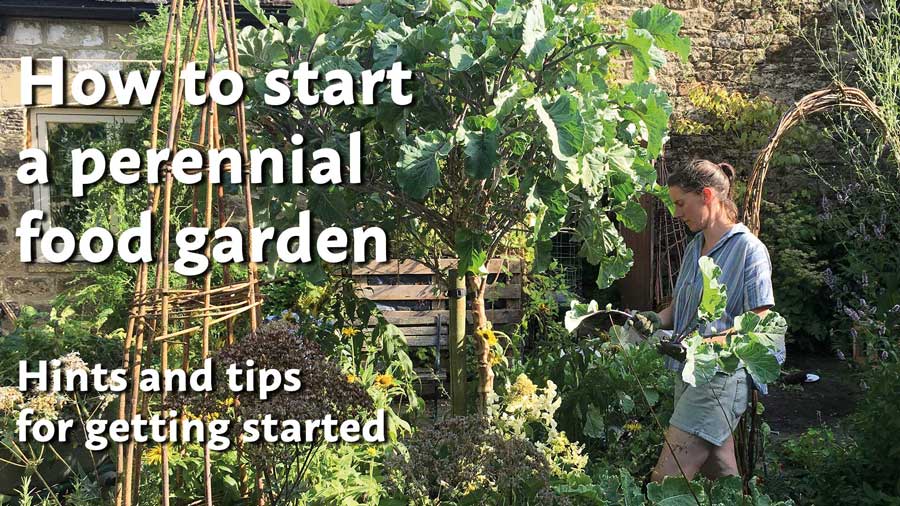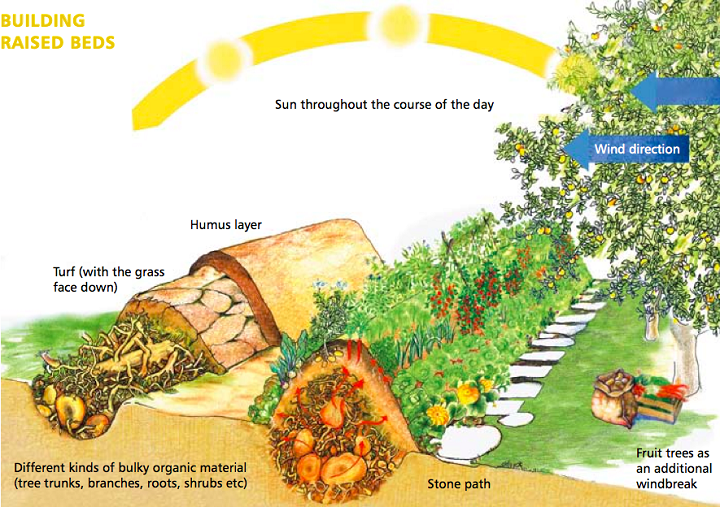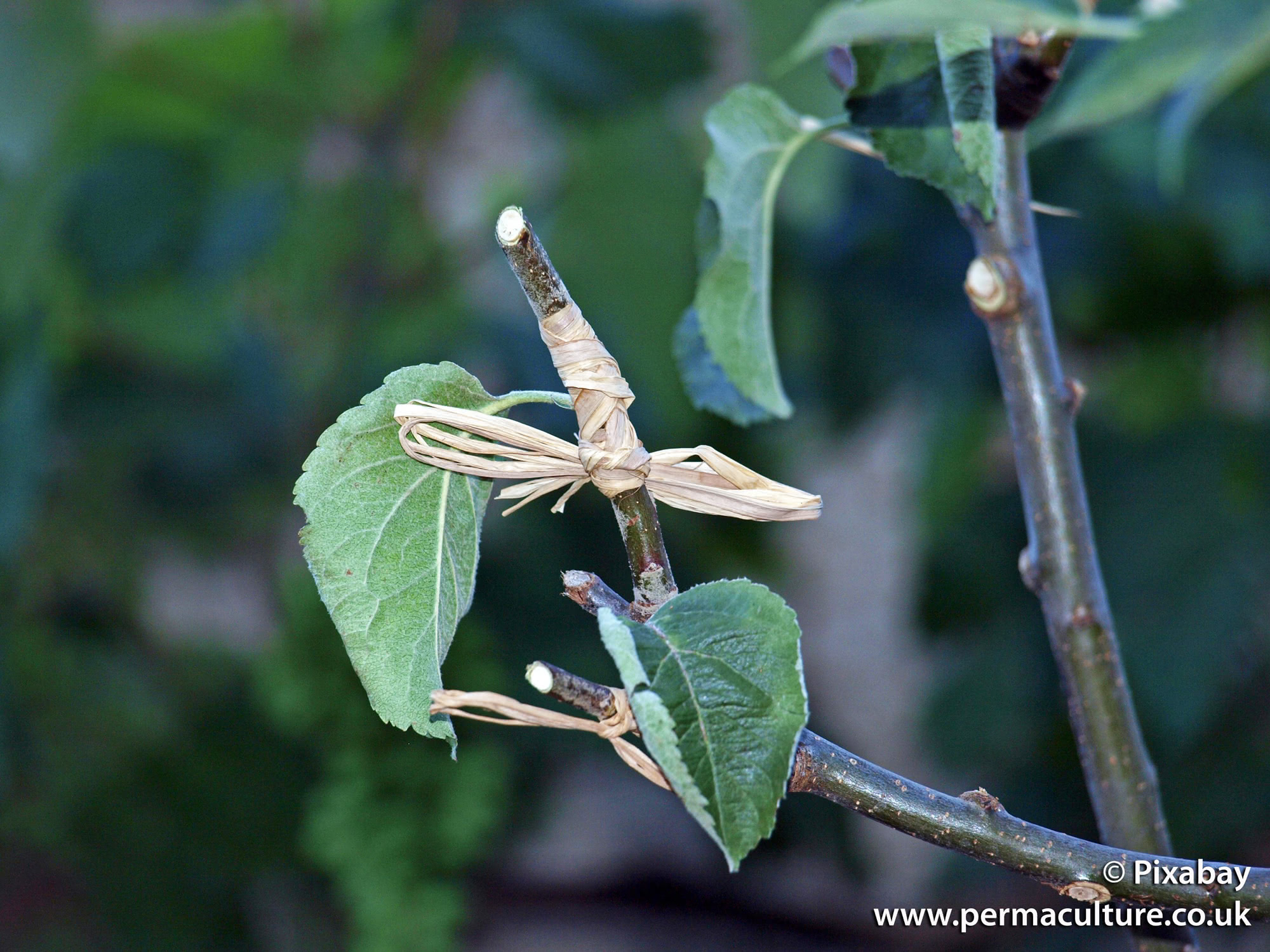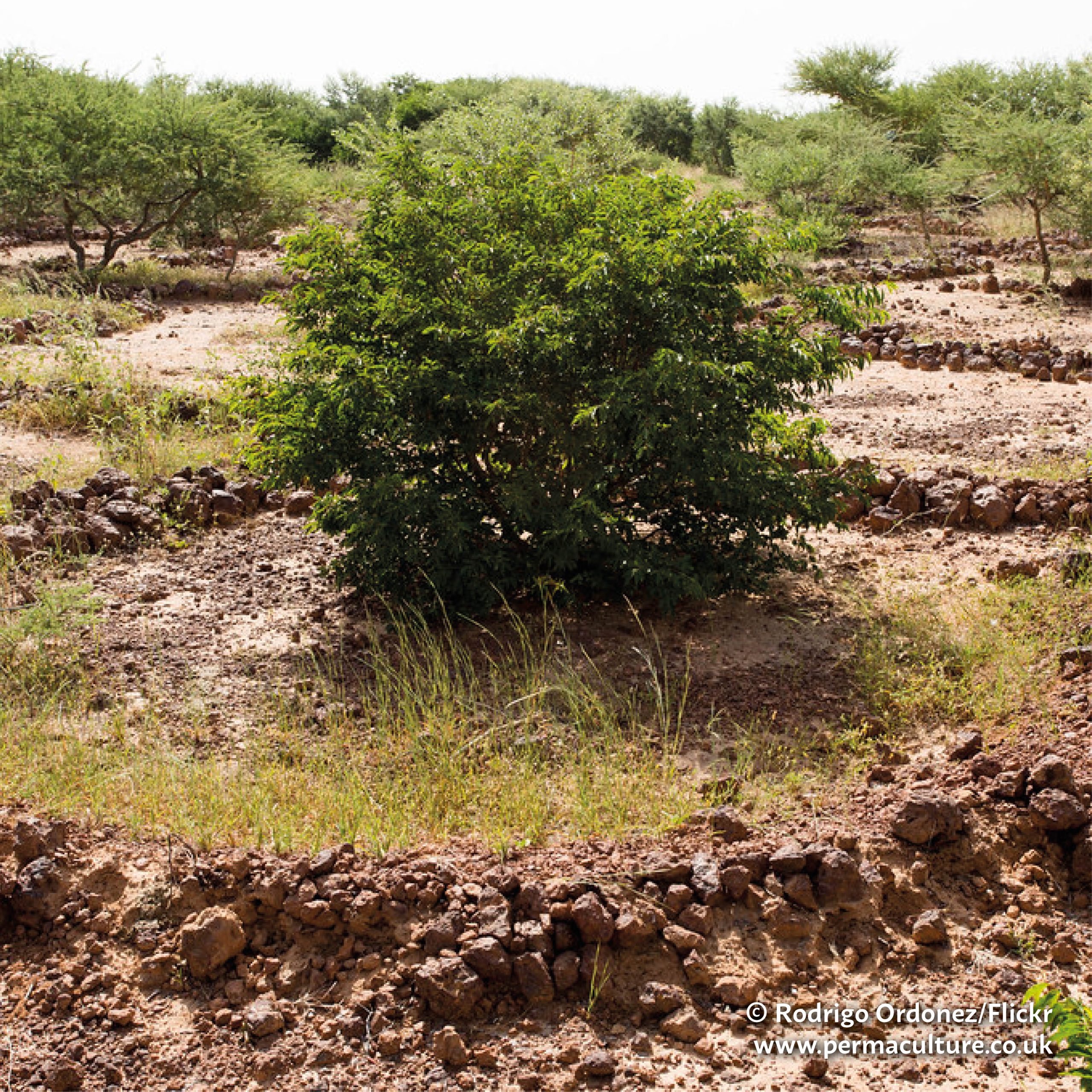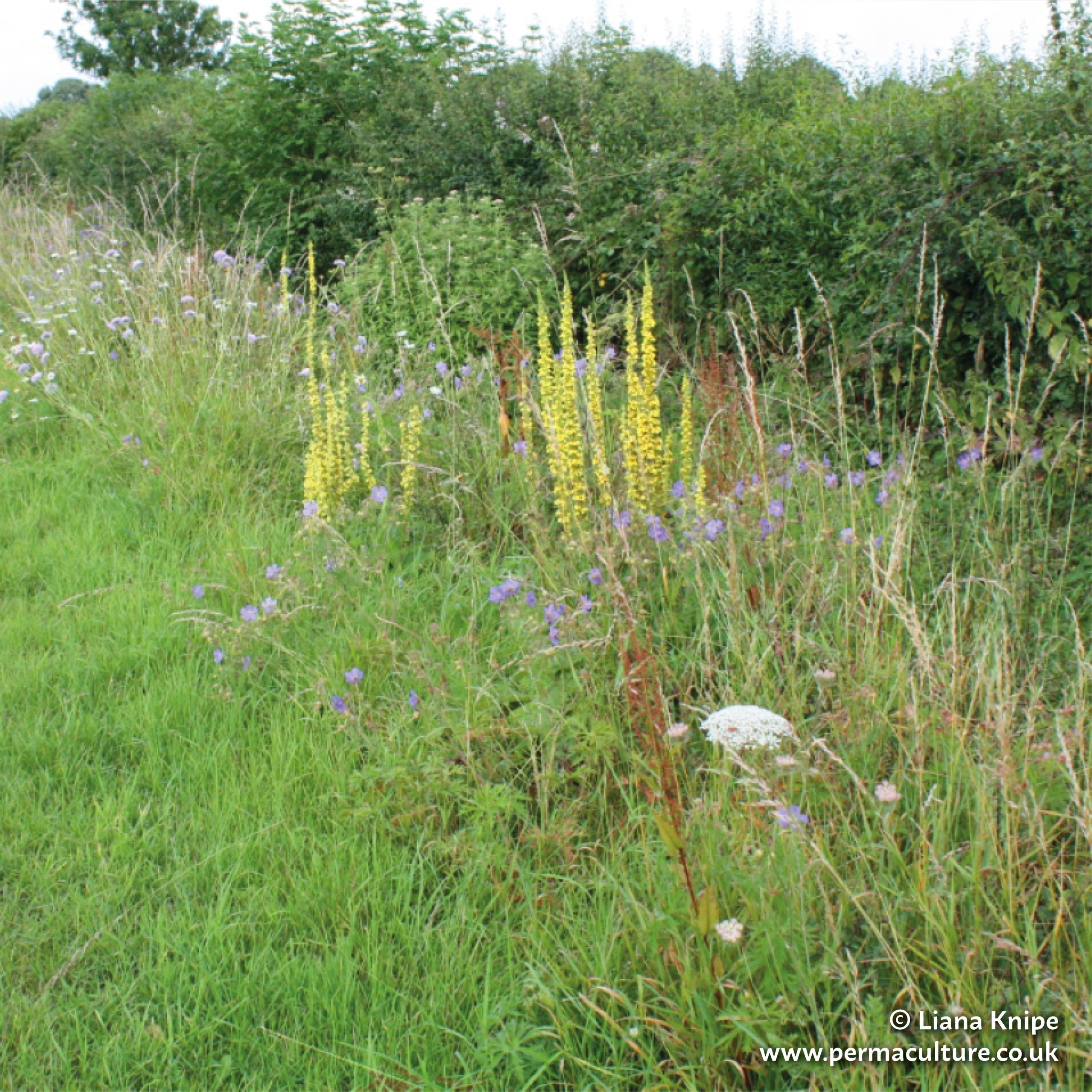When we get down to the low-growing crops below the trees and shrubs, the degree of shade becomes all-important – so crops for shade are necessary. This is the most diverse layer of the forest garden, so I’ll divide the plants according to their shade requirements. This chapter deals with the crops that can tolerate shade for most of the day. Some of these are true woodland species that do best in the shade. Others might grow faster with more sun but are best in a shady part of the forest garden to make them more tender or restrain their spreading tendencies.
As a herbaceous perennial member of the spinach family, Good King Henry (GKH to its friends) makes a predictable appearance in books and seed catalogues featuring perennial vegetables. Many of these almost guarantee to put the reader off the plant by saying that the young leaves are edible in salads. They are not; they are covered in bitter-tasting saponins and I have never met anyone who likes them. Those who do use the leaves prefer them cooked and tend to be further south; I speculate that the further south you go and the faster it grows, the milder-tasting it gets. There also seems to be an element of individual sensitivity to saponins. I know one couple who respectively love and hate leaves from exactly the same plant. Personally, I find that there are so many nicer-tasting leaves available by the time GKH sprouts that I haven’t the slightest inclination to use it.
It can still be worth growing, however, for two other products. The young flower shoots are relatively chunky and easy to peel. Without the soapy skin they are very mild flavoured and have a look that explains their nickname of ‘Lincolnshire asparagus’. But perhaps the most interesting aspect of GKH is the potential of its seeds as a temperate, perennial version of quinoa (Chenopodium quinoa). Tycho Holcomb of Myrrhis Permaculture harvests about a kilo of seed each year from his forest garden, cleaning the saponins off the seeds by running them several times through a hand blender with water. His online video takes you through all the steps from harvesting to eating. Grow in shade for leaves and shoots, in lighter shade for seeds.

Years ago, walking on a Cornish coastal path, I found some bulbs that had been dug up, perhaps by a badger, and stuck them in my pocket. For some time they grew in my garden with the label ‘Cornish mystery allium’. I now know that they are snowbells, also known as three-cornered leeks. They do look rather like a white bluebell and it is important not to confuse the leaves: snowbells have a different pattern of flower attachment, onion-scented leaves and a green stripe on each petal.
One useful aspect of snowbell is its growth pattern. It starts into growth in autumn, will grow right through a mild winter when few other alliums are available, and dies down in early summer. The leaves can be used like leeks or onion tops, the flowers look nice in a salad and the bulbs have a mild garlic flavour. It is carpet-forming, spreading by division and seeding, but in the north of Scotland it is not so invasive as it can be further south. The few-flowered leek, A. paradoxum, is similar but more invasive and more fiddly to harvest; I would not recommend it.
Allium ursinum and tricoccum are not especially closely related within the alliums, but they share an ecological niche and a common name in Europe and North America respectively. The European species, known as wild garlic, bear garlic, ramsons or ramps, is an allium with broad, soft leaves, adapted to growing in heavy shade in moist woodland soils. All parts are edible and have a strong garlic flavour. It is among the first of the herbaceous perennials to start growing again in spring, reappearing in my garden in late February or early March. I love its leaves chopped into salads or layered into a sandwich. Wild garlic pesto packs quite a punch and it is far better than bulb garlic for hummus (which you can make truly local by using broad beans instead of chickpeas). You can make a superior (and far easier) garlic bread simply by sprinkling finely chopped wild garlic onto a piece of toast and drizzling it with olive oil.
For all this, what makes wild garlic really useful is that when cooked it loses its garlicky flavour and becomes instead a mild, oniony pot herb. This turns it from a herb to a bulk vegetable and makes its productive, carpeting growth a virtue rather than a problem. In spring I use it wherever I would use onion. The only drawback is that if it dries out while cooking, it quickly acquires an unpleasant burnt-onion flavour.
You can harvest wild garlic simply by pulling off individual leaves or, for less garlicky hands and to speed things up, you can cut a clump at a time with scissors. I generally put my wild garlic leaves in a bowl of cold water for five minutes as soon as I get home, to preserve and wash them. They’ll then keep for at least a week in the fridge. Another way of harvesting that gives a slightly different product is to dig up a clump and then prepare the individual plants by cutting off the roots and removing the sheath of the bulb. The whole thing then hangs together in a sort of ‘spring onion’ version of wild garlic. Fried in plenty of oil and dipped in sauce, these are gourmet food indeed.
Wild garlic dies back dramatically at the first touch of hot sun, so it is worth having some planted in a really shady spot, which will extend the season to around June. Once it dies back you can also harvest the bulbs, although they are on the fiddly side and not the best garlic bulb available. They do not store like the bulbs of cultivated garlic as they dry out easily and die quite quickly if they are not stored moist. They can be preserved by pickling.
When Scots and Irish settlers went to North America, they applied their local name – ramps – for wild garlic to a similar-looking woodland allium, which is also known as wild leek. It has become a strong part of Appalachian culture, where ramps festivals are part of the calendar in many areas. Unlike wild garlic, its leaves become fibrous and unuseable once flowering starts, but its bulbs are shallower-growing and better. Both species make a great sauerkraut-like ferment.
Ground elder might normally be thought of as a weed that gardeners spend a lot of time trying to remove from their gardens, but it is also a tasty perennial vegetable, as might be expected by something brought to Britain by Italians (going by the name of Romans back then). Its common Scottish name of bishop’s weed also hints at its culinary past as it was grown in the gardens of monasteries and bishops’ palaces.
If you want to try growing it in a forest garden, don’t forget its spready nature. I have contained it in one bed for a decade by using all the tricks. It is in full shade, which reduces its energy for spreading and makes the leaves more tender. It is a variegated variety, which again is less vigorous and therefore less invasive, but no less tasty. It is hemmed in by hoed woodchip paths and interplanted with other ‘thugs’ like wild garlic and wild strawberry. Even with these precautions, it is important to prevent it from ever flowering and seeding; fortunately the young flower stems are delicious, so removing them is its own reward.
As we’ll see again and again, especially with the celery family, the edible part is the young, emergent leaf shoots, picked before they have fully expanded. They are best fried in olive oil, and every spring I make a dish that I call ‘pernicious pasta’, in honour of both ground elder’s Roman connection and its reputation as a pernicious weed. I break a handful of dried linguine in half, leaving it around the same length as the ground elder shoots, boil until nearly al dente, drain and put aside. I then fry a small onion (chopped) for a couple of minutes, add a few chopped mushrooms and fry for two minutes more. To this I add some nettle tops and fry for five minutes more, then I add ground elder leaf shoots and fry for another five minutes until tender. I then add the linguine and stir, followed by some cream and a little of the cooking water from the pasta, a teaspoon of bouillon or other stock powder, and fresh, finely-chopped herbs such as parsley, wild celery, wild garlic, Scots lovage and sweet cicely. After a couple more minutes’ cooking it is ready to serve.
The flavour of Jack-by-the-hedge is best described by its alternative name: garlic mustard. It is a Eurasian native which can be somewhat spready in a forest garden, so only grow it if you are keen on the taste. In North America, don’t touch it with a bargepole: it is a serious invasive pest that sets a nasty ecological trap for butterflies which lay their eggs on it thinking that it is the native toothwort (Dentaria). When the eggs hatch the caterpillars are unable to digest the leaves and they soon die. Its roots have a nice, horseradish-like flavour but are quite fiddly to harvest.
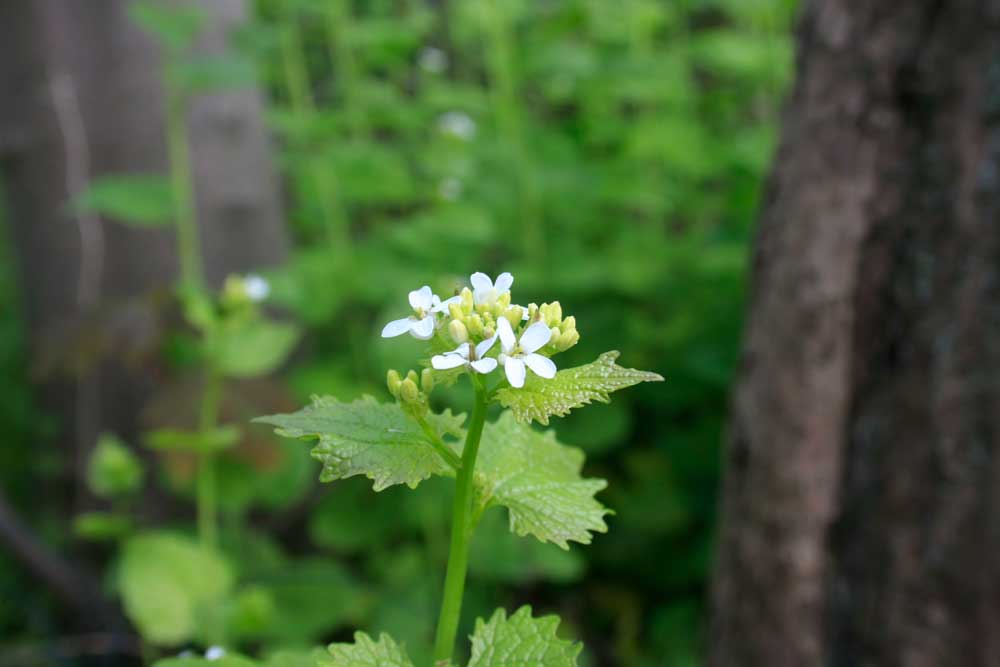
The bellflowers are a large genus adapted to many niches. One of the best is a true woodland plant: C. latifolia, the giant bellflower. It is an untidy plant, shooting up to a height of two metres from perennial roots and then flopping all over the place, so staking is a good idea. The growing tips are, as usual, the best bit, with a sweet, nutty flavour either raw or cooked. The roots are sweet and crisp and the leaves and flowers can both be used in a salad. Stephen Barstow blanches the shoots, which makes them even sweeter and more tender. He describes giant bellflower as being “both … cabbage and carrots” to the Sámi people of northern Scandinavia. It can spread by both seed and root to become invasive, but this isn’t generally a problem if you are eating them. There are more bellflowers in Chapter 9.
Bunchberry is also known as creeping dogwood. Its beautiful flowers, with four porcelain-white bracts, reveal its relationship to the shrubs and trees of the dogwood family, but it instead makes a low-growing herbaceous perennial, spreading by slender rhizomes. It is very hardy, growing even in Greenland. It grows well in my garden but unfortunately it is self-sterile, so I’ll need to get another, genetically distinct, plant before I can try the bunches of berries that give it its name. These are generally agreed to be not the most exciting fruit in the world, but pleasant and sweet. They are also high in pectin, so they make a useful base for helping other fruit to set.
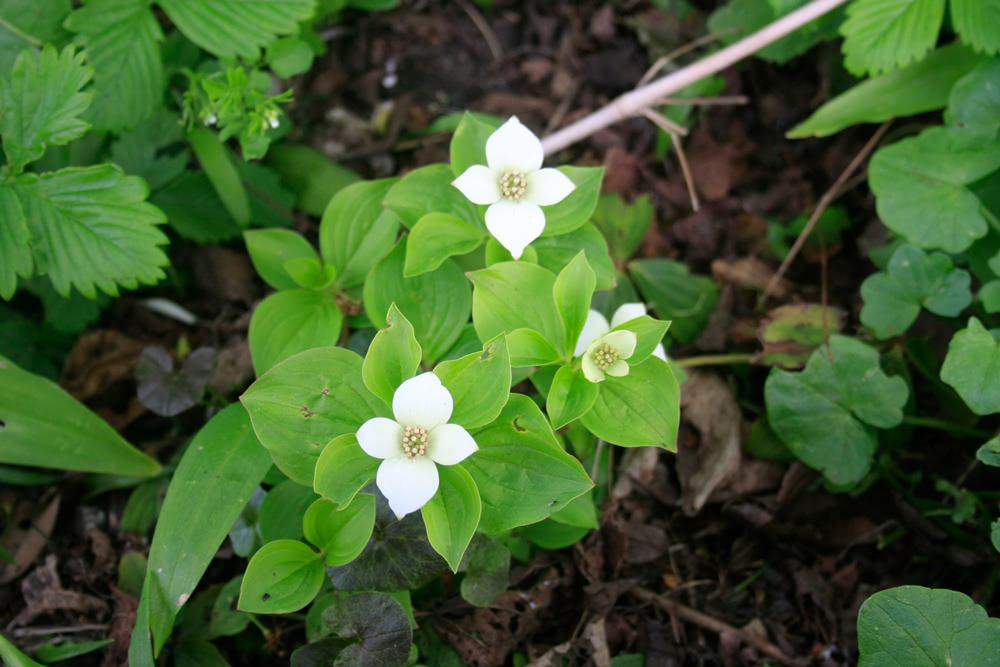
– – –
This is an extract from Alan Carter’s A Food Forest in your Garden, an informative guide for anyone wanting to create a forest garden, large or small. Packed with details on creating your own productive, edible paradise with multiple layers.
More from Alan: Herbaceous perennials for the food forest
A Food Forest in Your Garden
by Alan Carter
Alan studied forestry and has worked variously in forestry, gardening, conservation and greenspace management. He has been writing and teaching about forest gardening since 2011, having spent many years experimenting with it in his allotment in Aberdeen.
